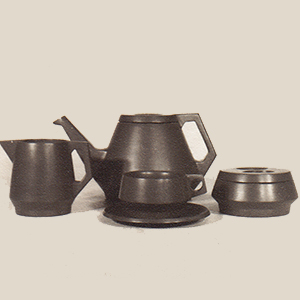Institute of Industrial Design of Rosario and its method for generating good form (1960-1964)
DOI:
https://doi.org/10.35305/23626097v8i15.328Keywords:
industrial design, good form, design methodAbstract
This paper deals with the ideas about form design developed by the Institute of Industrial Design (IDI) of Rosario from its foundation in 1960 until the first generation of products designed in collaboration with the local industry in 1964. The main debates around the theory of good form and the proposals put forward by Gastón Breyer (1919-2009) and Jorge Vila Ortiz (1923-2001), who were both the first directors of the Institute and the professors of the subject Vision at Rosario School of Architecture and Planning, are analysed. The main objective is to reveal some of the outlines of the IDI's design method by studying the proposals included in its first publicity brochure. The study also reconstructs this method as well as the proposals developed by Vila Ortiz in an article published in A&P magazine through the observation of four products designed for local companies. An attempt is made to verify how the IDI acted as a promoter of ideas about good form from its practical production linked to industry and development.
Downloads
Metrics
References
Archivo Fundación de Investigación en Diseño Argentino (IDA).
Bill, M. (1952). Form. Basilea, Suiza: Verlag Karl Werner.
Blanco, R. (2005). Crónicas del diseño industrial en la Argentina. Buenos Aires, Argentina: FADU.
Breyer, G. (1960). Programa asignatura Visión III. Escuela de Arquitectura y Urbanismo, Facultad de Ciencias Matemáticas, Físico-Químicas y Naturales asociadas a la Industria de la Universidad del Litoral. En Facultad de Arquitectura, Planeamiento y Diseño de la Universidad Nacional de Rosario. Rosario.
Crispiani, A. (2004). Entre dos mundos: el largo viaje de la Buena Forma. Revista Block 6, 40-49.
Crispiani, A. (2011). Objetos para transformar el mundo. Trayectoria del arte concreto-invención entre Argentina y Chile, 1940-1970. Buenos Aires, Argentina: Universidad Nacional de Quilmes, Prometeo, ARQ Editorial.
Devalle, V. (2009). La travesía de la forma. Emergencia y consolidación del Diseño gráfico (1948-1984). Bueno Aires, Argentina: Paidós.
Instituto de Diseño (1961). Publicación del Instituto de Diseño de la Facultad de Ciencias Matemáticas de la Universidad Nacional del Litoral. En Archivo Fundación IDA, Buenos Aires.
Instituto de Diseño Industrial de la Universidad Nacional del Litoral. (1969). Revista Summa 15, 33-35.
Maldonado, T. (1955). Max Bill. Buenos Aires, Argentina: Nueva Visión.
Maldonado, T. (1997). Diseño industrial y sociedad. En Méndez Mosquera, C., Perazzo, N. (comp.). Escritos preulmianos. Buenos Aires, Argentina: Infinito (pp. 63-65). (Trabajo original publicado en 1949).
Moholy Nagy, L. (2008). La nueva visión. (Trad. B. Kenny). Buenos Aires, Argentina: Ed. Infinito. (Trabajo original publicado en 1946).
Moholy-Nagy, L. (1929). Von material zu Architektur. Munich, Alemania: Albert Langen Verlag. Disponible en: https://monoskop.org/images/a/a7/Moholy-Nagy_Laszlo_Von_Material_zu_Architektur_1929.pdf
Vila Ortiz, J. (1961). Programa asignatura Visión I. Escuela de Arquitectura y Urbanismo, Facultad de Ciencias Matemáticas, Físico-Químicas y Naturales asociadas a la Industria de la Universidad del Litoral. En Facultad de Arquitectura, Planeamiento y Diseño de la Universidad Nacional de Rosario. Rosario.
Vila Ortiz, J. (1965). Límites del diseño. Revista A&P 5-6(65), 86-93.

Published
How to Cite
Issue
Section
License
Open access policy
A&P Continuidad is a non-profit and open access publication. According to Mexico Declaration on Cultural Policies, the journal distribution is submitted to Creative Commons Attribution-Noncommercial-ShareAlike 4.0 International Public License (CC BY-NC-SA). “Neither the commercial use of the original work nor that of the possible derivative works are allowed. The distribution of derivative works should be submitted to the license regulating the original work. This license is not free.”
A&P Continuidad authorizes the partial or full reproduction of texts and graphs provided that the source is cited. Authors are exclusively responsible for the criteria expressed in the articles which do not necessarily reflect the opinion of the Editorial Committee or that of the Direction Board. The copyright of the published articles pertains to their authors or publishers.
Transfer of rights
The acceptance of an article to be published implies the author’s transfer of rights to the journal. Authors continue to have the right to use the material in future books or publications, approve or veto the republication of their works as well as the rights related to patents or other rights. Transfer of rights form may be downloaded here.























 This OJS site and its metadata are under a
This OJS site and its metadata are under a 

